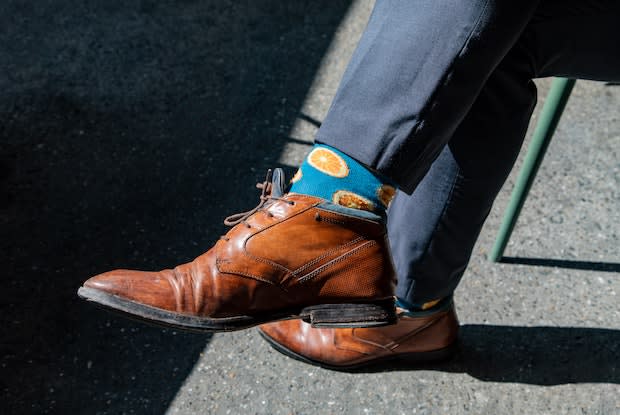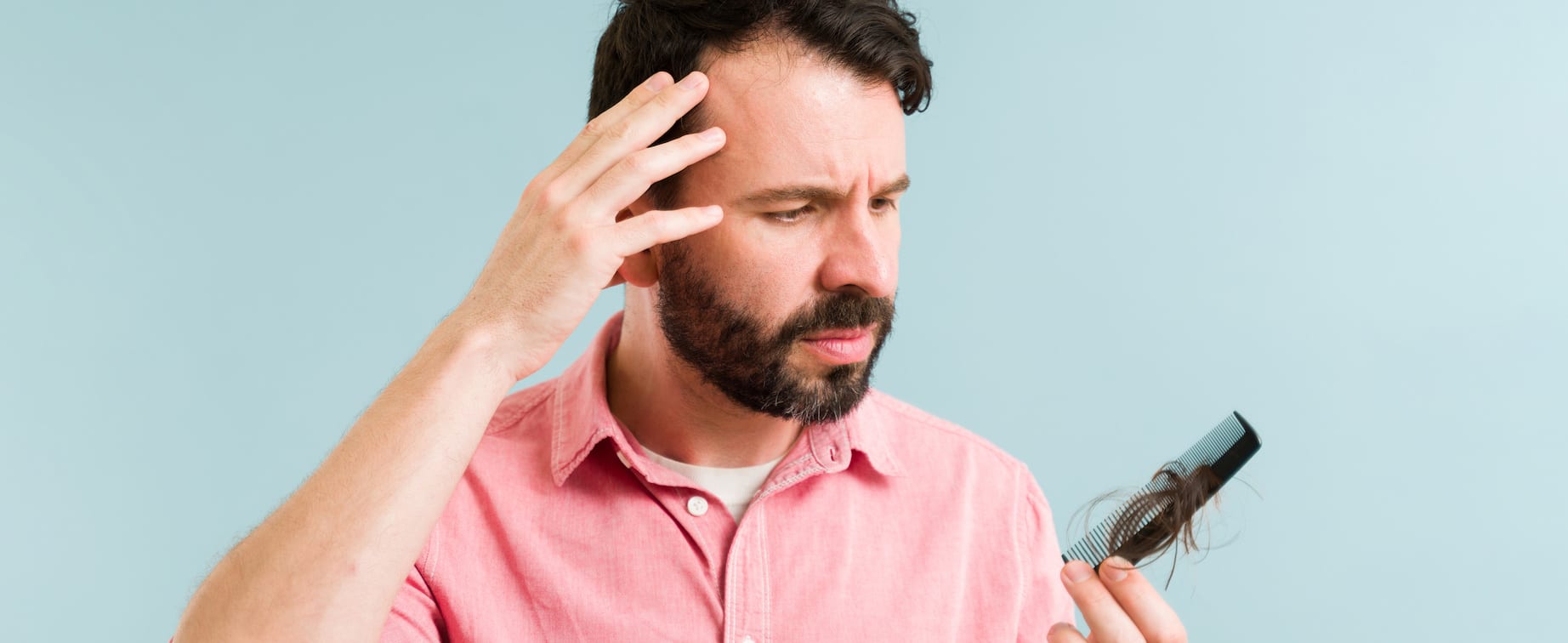Hair loss can occur in both men and women, but each gender has different causes behind hair loss and hair thinning. Hair loss is often associated with older men, but it can affect men of all ages. Age is one of the most common risk factors, but your family history and medical conditions can also increase the chances of hair loss or bald spots. Minoxidil or Aldactone may help with hair growth and hair thickness. Read on to learn more about the causes of hair loss in men.

Family History
Family history is one of the major risk factors for hair loss. One study found that male pattern hair loss is connected to history and age. If your father had hair loss, you are 2.5 times more likely to have hair loss than men with fathers without hair loss. 1
Many people associate hair loss with the mother's genetics because the X chromosome is associated with the dominant hair loss gene. Your family history does impact the longevity of your hair, but other factors are also responsible, including medications, nutrition, and stress levels.

Age
The body goes through many changes as the years go on, and these changes may be the most noticeable in your hair. Losing your hair is expected for many older men, but it does not have to be an inevitable fact of life.
The hair grows in three stages: anagen, catagen, and telogen. Anagen is the active phase of hair growth where the cells in the root divide rapidly. Catagen is the transitional phase, and around three percent of hairs are replaced in this phase. Telogen is the resting phase and accounts for six to eight percent of all hairs. You shed about 25 to 100 telogen hairs daily. 2
Many bodily processes slow down as the body ages, including hair growth. Scalp hair begins to lose color, and as the hair becomes lighter, the thickness of the hair may also decline. If a man is predisposed to hair loss, they may begin to notice changes around 30 years old. A lot of men are nearly bald by 60. 3 For some men, hair loss may only occur at the temples or the top of the head.
Immune Disorders
When the immune system malfunctions, it can attack itself, mistaking certain body parts for foreign invaders. In the case of alopecia areata, the immune system attacks hair follicles, which hold the hairs in place. Alopecia can occur anywhere on the body but is most common on the scalp, eyelashes, and eyebrows. The more follicles the immune system attacks, the more hair loss you experience. Most people develop symptoms of alopecia by 30 years old. 4

Style Choices
Repeated friction caused by activities or clothing choices can cause hair loss in some men. If you wear the same boots, socks, or tight clothing, the constant friction against the skin can lead to hair loss. This is known as frictional alopecia. When the material is constantly in contact with the skin, it can lead to hair breakage at different levels of the growth cycle. 5
You can reverse frictional alopecia if you take the proper measures early. This can be difficult for some men because they may have a work in uniform that they cannot change. For example, men who wear dress socks every day for work may notice that they have little to no hair where the socks are in contact with the skin.
Certain hairstyles can also cause hair loss on the head (traction alopecia). Traction alopecia is caused by tight hairstyles and repeated pulling of the hair. If you frequently wear tight ponytails, you may worsen your hair loss.

Preventing Hair Loss
Even if you take the correct preventative measures, hair loss can still occur. In this case, you may receive a prescription for minoxidil or finasteride. Minoxidil is topical foam, and finasteride is an oral pill. These medications can take up to a year to see the full results.
If you smoke cigarettes and have an unhealthy diet, you may also be affecting your hair growth. Smoking can increase the risk of hair loss, and quitting smoking can improve the longevity of your hair follicles. You may also want to incorporate vegetables, fruits, unsaturated fats, and lean proteins into your diet. Iron-rich foods can also increase hemoglobin in the blood, which assists in hair growth. Learn more about the causes of hair loss or schedule a consultation with MailMyMeds to find the right treatment for hair loss prevention today.
The content in this article is intended for informational purposes only. This website does not provide medical advice. In all circumstances, you should always seek the advice of your physician and/or other qualified health professionals(s) for drug, medical condition, or treatment advice. The content provided on this website is not a substitute for professional medical advice, diagnosis, or treatment.






